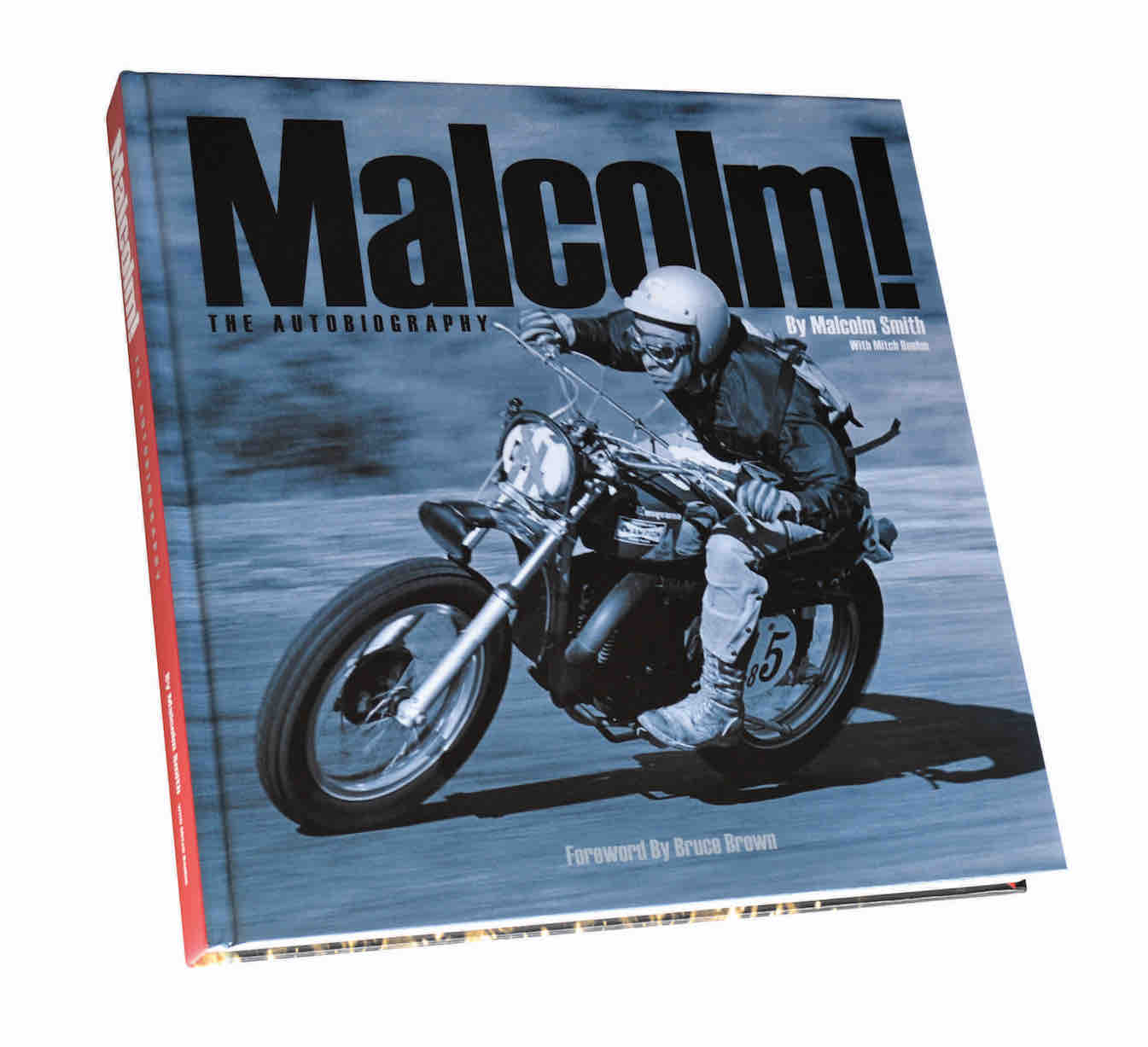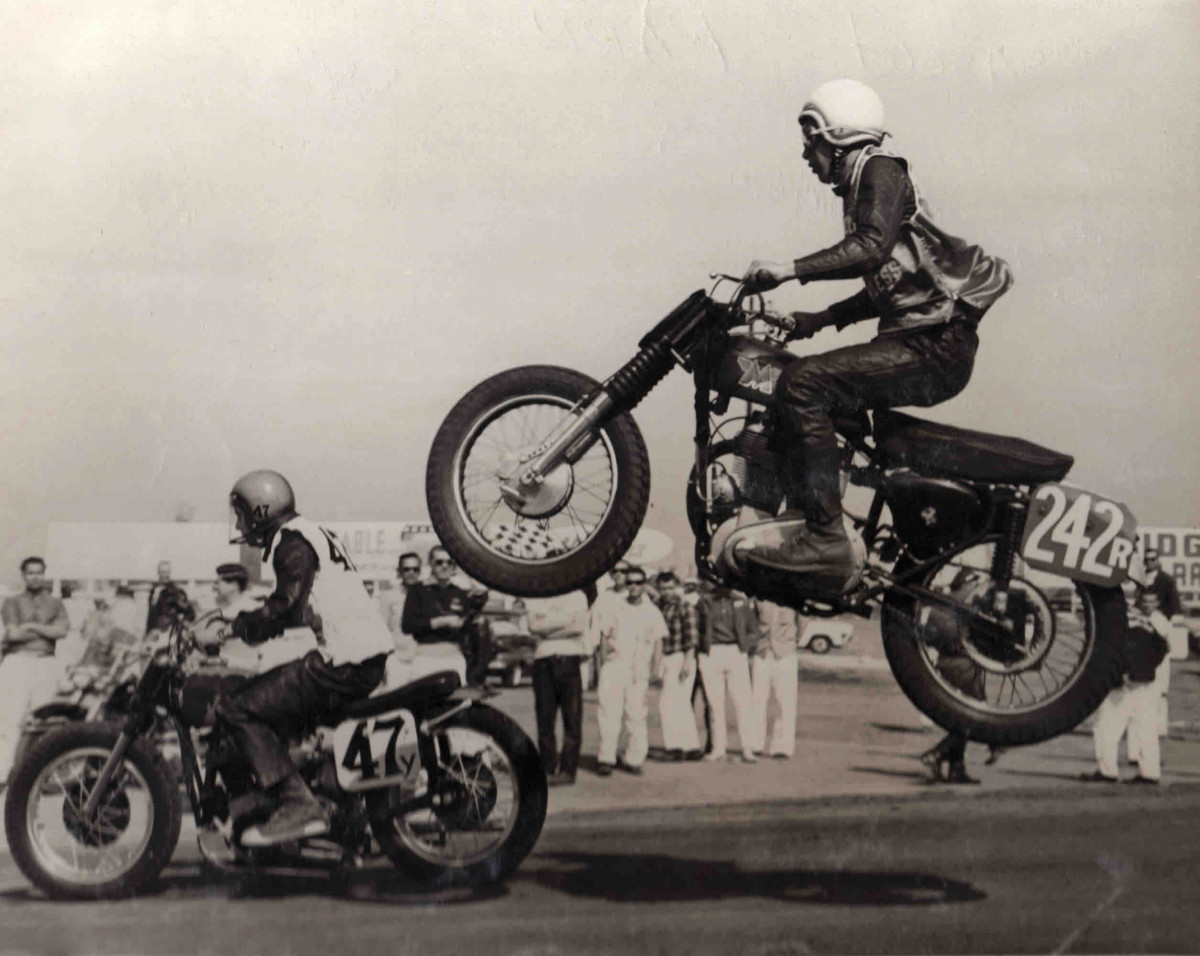
AFT Retro File: Malcolm Smith’s Dirt Track Roots – Part I
Webmaster’s Note:
It’s a good bet most dirt track fans know of Malcolm Smith, and most probably know quite a bit about him, too: ISDT gold medalist; desert-racing champion on two wheels and four; co-star of On Any Sunday, arguably the most epic motorcycling movie ever; aftermarket-company founder; motorcycle-shop owner; all around good guy. Malcolm’s done a ton, for sure.
But unless you’ve read Malcolm’s 2015 autobiography, titled Malcolm! The Autobiography, you probably don’t know much about Malcolm’s early days: his childhood years (first in the Pacific Northwest, and then in So Cal); his first motorcycles (a Lambretta scooter, and later a 500cc Matchless thumper); where he worked (a couple of So Cal bike shops); or his early racing exploits in the deserts, scrambles tracks and dirt tracks of Southern California.
It’s true. Before he raced in Baja on bikes and buggies, or shipped off to Europe to gather a handful of ISDT gold medals, Malcolm Smith was a dirt tracker, and a darn good one. At racetracks like Perris, Ascot Park, DeAnza and El Cajon Raceway in the ’50s and ’60s, Malcolm won races and banged bars with loads of legendary dirt trackers, including Cal Rayborn, Swede Savage, Gene Romero and others. Malcolm eventually left the Class-C scene to concentrate on desert, hare-n-hound and enduro racing, thanks largely to his introduction to two-stroke motorcycles. But the cornering, sliding and body-english skills he learned on the short-tracks, TTs and half-miles in those formative years helped him tremendously in his later racing exploits.
Please enjoy this multi-part series on Malcolm’s dirt track history, and if you’re curious about the man’s amazingly interesting and adventurous life (or you need a great Christmas gift for that motorcyclist in your life), be sure to pick up a copy of his autobiography, available at www.themalcolmbook.com.
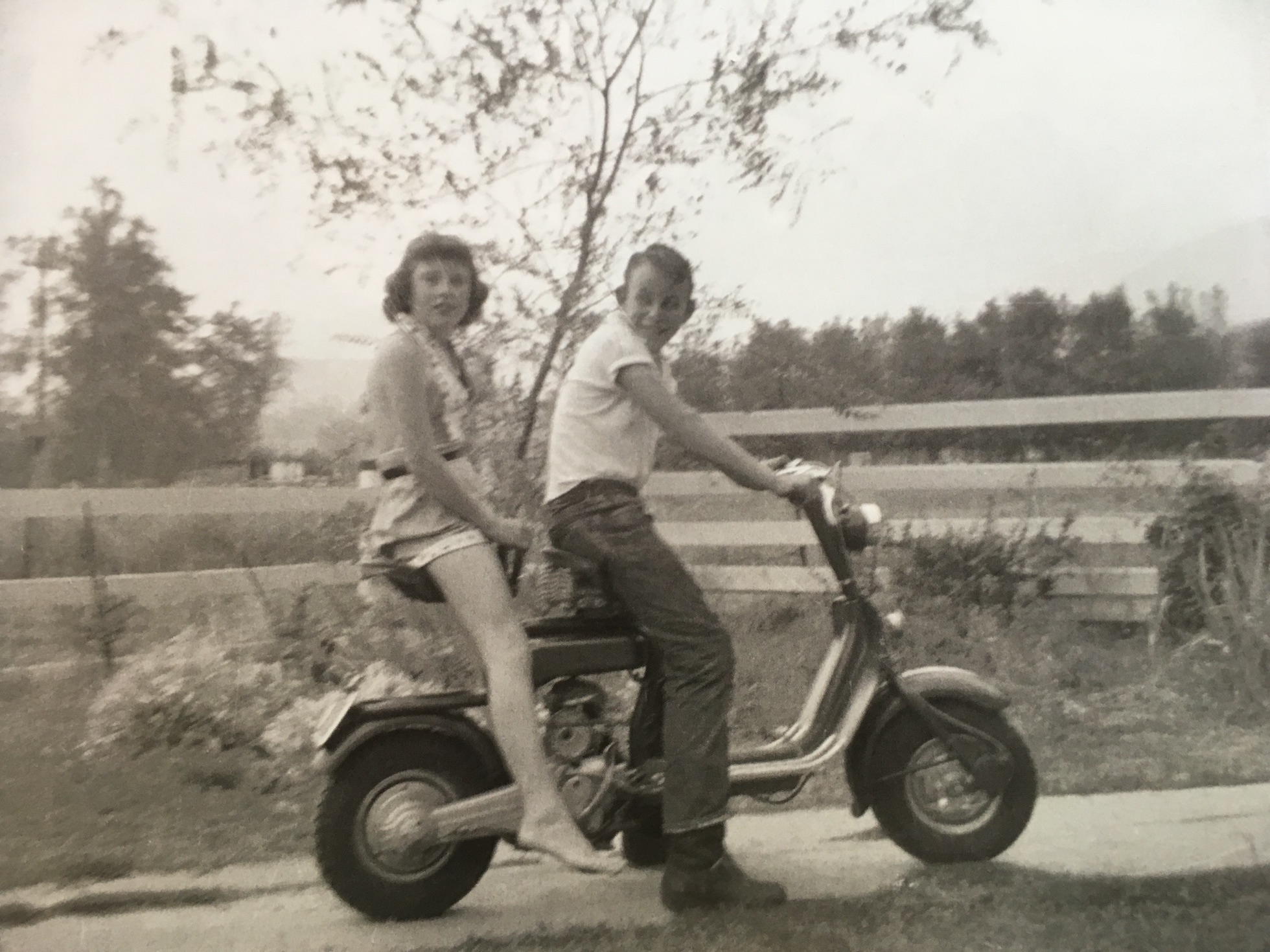
A lot of people know my first motorcycle was a 125cc Lambretta scooter, which my mother Elizabeth bought for me when I was 13 years old. What most don’t know, however, is that my initial desire to own a motorcycle came from wanting to fix one (a basket case in a neighbor’s yard), not ride one. It is easily the great irony of my life, something that mystifies folks – and even me – to this day. They simply can’t believe I got into motorcycles for mechanical and not adrenaline-based reasons.
Of course, that changed pretty quickly once I got that Lambretta home. I still wanted to know how things worked mechanically, but suddenly I realized I could go places. And on my own! I looked at the bike, then out across San Bernardino’s flood-control plains and dikes, and then up into the mountains at the fire roads snaking across the hillsides… and I remember having that feeling, one all riders know and remember, especially at the very beginning of their motorcycling career – that feeling of freedom.
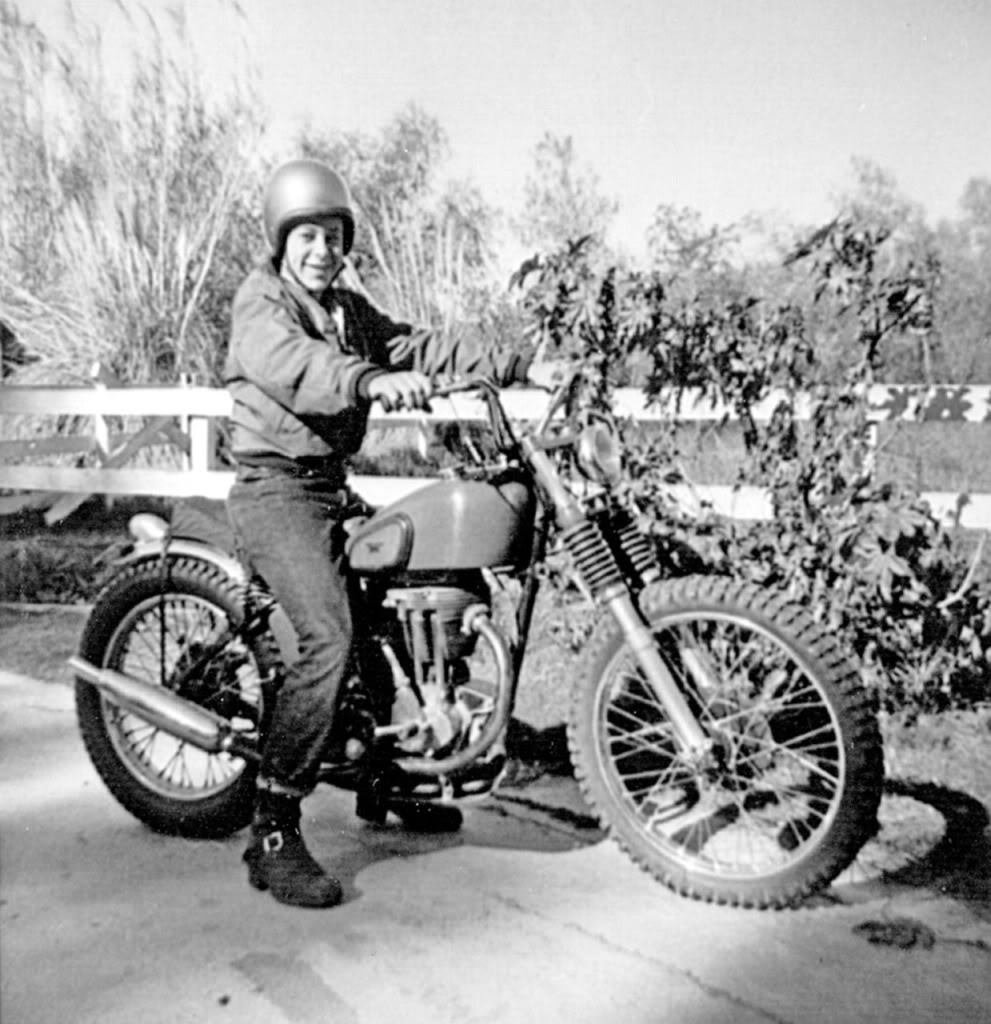
After a couple years of adventurous daily roaming and riding with my buddy John Moreland (who had a Lambretta a lot like mine), I got the bug to get a real motorcycle, and bought a used Matchless 500cc single after selling the Lambretta. The bike had lights and was street-legal, but the front knobby, rear semi-knobby, fork boots, the lack of a front fender and the dirt track-style handlebar gave the bike a pretty serious off-road look. Which I loved. I’d ridden my Lambretta quite a ways from home at times, but the Matchless opened up a whole new world of exploration for me, and it wasn’t long before I was taking full advantage. Places like Lake Arrowhead and Big Bear Lake had been a stretch on the scooter, but they were suddenly much easier to visit on the larger and faster Matchless. Even the high desert beyond the mountains was now within easy reach.
Eventually, and especially after taking a clean-up job at a local bike shop owned by a man named Pappy Mott, I got the racing bug. The shop’s service manager, a guy named George French, let me ride one of the shop’s sponsored rider’s race bikes – another Matchless single ridden by Jack Thurman – and I did pretty well on it, quickly learning how to negotiate the local scrambles courses such as Console Springs, and some hare-’n-hound races in the desert.
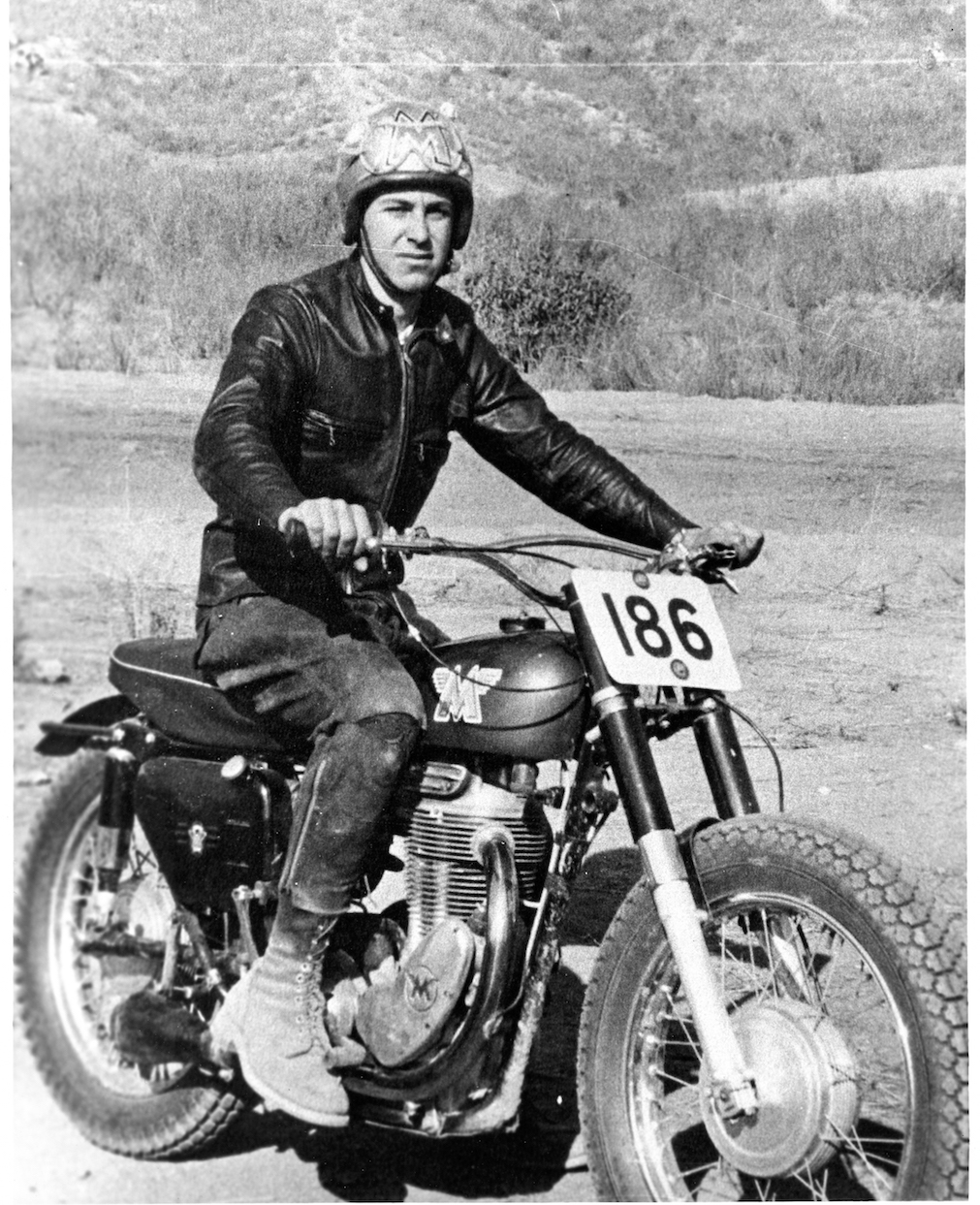
I bought a second used Matchless, and with help from a shop teacher at school, bored it to 700cc using special cylinder sleeve and a Dodge Ram Charger piston. It was really fast, and I was actually able to pass some of the Triumph and BSA twins on the straights during some of the half-mile and TT races I was beginning to take part in. I spent a lot of time modifying my bikes, making them lighter and more durable at the same time so they wouldn’t break.
I very much enjoyed racing, prepping the motorcycles so they’d last, and of course the competitiveness of it all, lining up next to other riders, pitting one’s skills against those of others, etc. I’d been pretty lucky despite crashing a good bit in my first year or two of racing, and as I started to do well on the dirt tracks, I started to feel pretty good about it. I typically raced once a month or so, whenever I had enough money for gas and entry fees. I was getting better and, slowly but surely, thinking I had a future, maybe in racing, but almost certainly in motorcycles.
The AMA wouldn’t allow you to run its Novice/Amateur/Expert national series until you had a professional license, and you had to be eighteen to get one. So the minute I turned eighteen in March of 1959, I got my pro license. And a week or so later I entered a TT at DeAnza, an oiled-dirt oval and TT track upon which legendary Ascot Park was modeled.
There were a bunch of top-level riders there that day, guys like Dick Hamer and Jim Goldsmith, both of whom enjoyed shop and factory support. Hamer was on a BSA, Goldsmith a Harley. I was riding Thurman’s 600cc Matchless Typhoon, a hot-rodded version of the standard Matchless 500. I’d gone riding with Thurman a week or so earlier and was surprised to find I was as fast as he was. That helped my confidence that day, as I got second in my heat.
I got runner-up in the main, too, beating a bunch of locals, and I was feeling pretty good about it. I was really fast in the right-handers, as I could always dive under guys and pass them there. It was a great scene; big grandstands, lots of fans, and plenty of energy in the pits. I remember thinking, “Hey, I’m pretty good at this. I might just be on my way!” Frenchie was pushing me, too, telling me I’d quickly work my way up, and I believed him. More and more, it looked like I was gonna be a motorcycle racer, and maybe even a pretty good one.
The very next day, I went riding in the hills near my home with Bob Luli and Mike Christensen. We came upon a metal gate, which we had to go around to get home via a tricky section. I went first, then Luli. But Christensen was late. After a minute, Bob took off to go back to see where Mike was, and I followed. But when Luli stalled on a hill, I went by him, and tore off toward a jump I always cleared. Problem was, Christensen was on his way back to us, coming at me on the road I was about to jump at a 90-degree angle.
We couldn’t have smacked into each other more perfectly if we’d planned it. Mike’s bike hit me directly on my left side, shattering my leg and hitting me so hard it bent my Matchless nearly in half. I flew into a pepper tree on the side of the trail, while Mike tumbled nearby, bruised but unhurt.
I was very disoriented, and obviously in shock for a good while. When I could finally focus, and realized I was in a tree, I looked down and saw the bottom of a boot laying on my chest, with the sole facing my head. Why, I remember wondering, was Mike laying on me with his leg on my chest? I had no idea, so I asked him: “Mike, can you get your leg off my chest, please?”
I’ll never forget his answer:
“Malcolm,” he said from several yards away, “that’s not my leg. It’s yours.”
My good luck, it seemed, had finally run out. And my budding racing career was toast.
Check out Part II, scheduled for this space sometime next week...
